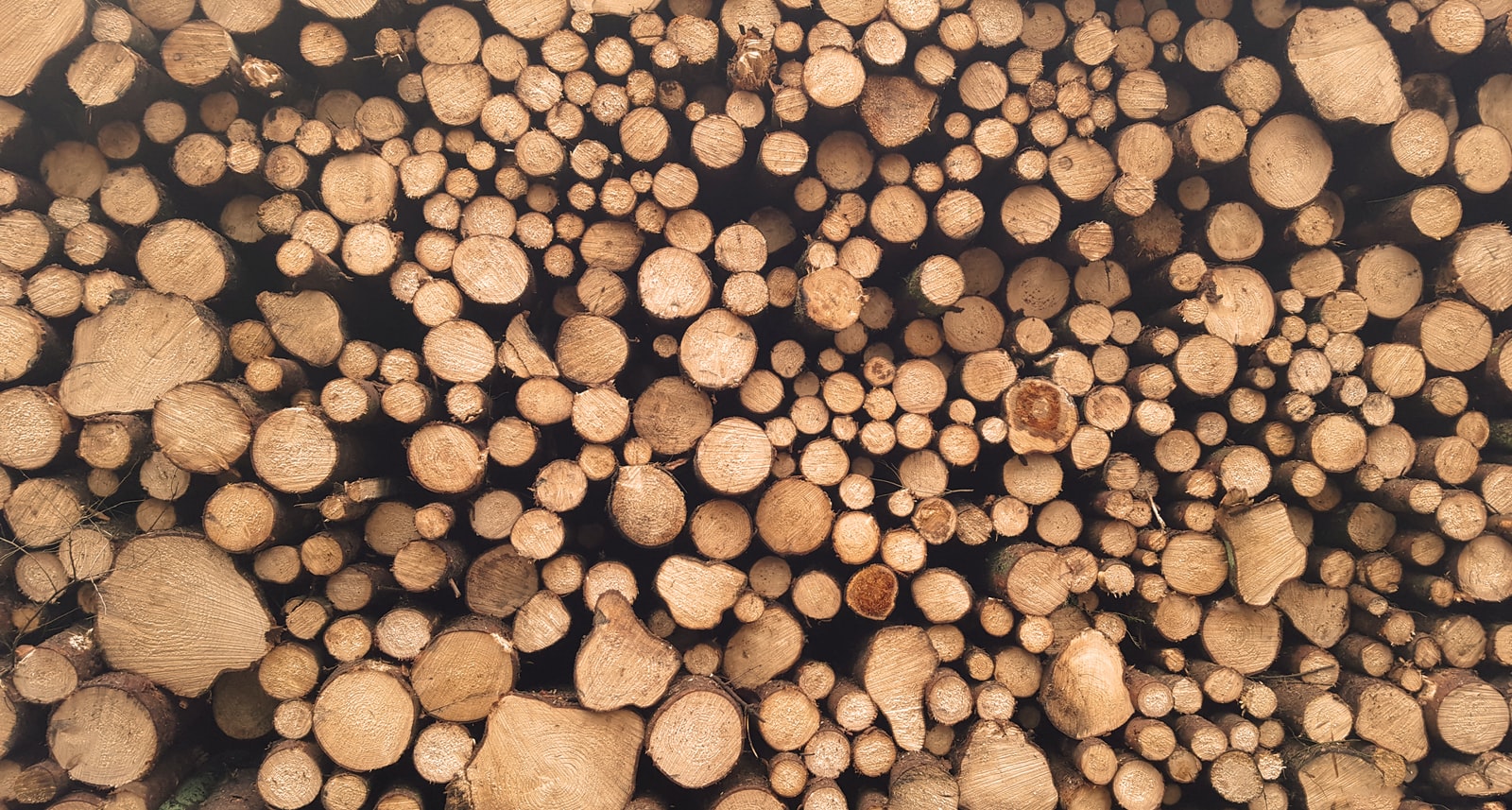For any wood burning system to work efficiently it’s very important to ensure firewood is sized right & seasoned.
Dry seasoned firewood will ignite easier, burn hotter and more efficiently. Seasoned firewood burns cleaner too. The good news is there’s no best way to stack firewood, everyone has different situations and available space. Here’s a few tried-and-true tips on drying firewood to get you started !
- The lighter weight firewood species should be stacked in early spring to be ready for burning that fall. However, hardwoods like oak and maple take more than a full year to properly season, except in arid climates. Drying in maritime climates may take longer, depending on the size of your firewood.
- Firewood length should be 3″ shorter than the firebox for best burn.
- Shorter pieces are usually easier to handle and make fire maintenance easier, 14″ to 16″ is a good length.
- If you split your own wood, aim for a variety of sizes, from 3″ to 6″ at the largest cross sectional dimension. Sometimes commercial firewood is not split small enough for smaller stoves. Talk with your firewood supplier, they may process firewood to better fit your stove.
- Larger stoves and fireplaces may accept larger firewood, but never should exceed 8″ diameter.
- The Beehive or Holz Hausen firewood stack – This alternative to stacking firewood in long rows has been around for many years in Europe and is gaining popularity in our neck of the woods. It’s quite simple and allows one to stack lots of wood in a small area. Many find it fun too, kids love to help pitch-in when stacking firewood like this.

- Hardwood vs Softwood – Generally speaking, most species of wood whether hard or soft will have similar heating values (BTU’s) by weight. Generally hardwood species are used for heating as the composition of wood fibers grow much denser than softwood species. Denser, heavier hardwood pieces will burn slower and provide more BTU’s pound for pound than softwood but will take longer to season than softwood.
- Very hard woods like oak and maple are good fuel for long burns in very cold weather, but these high density hardwoods can make controlling comfortable heat output more difficult in warmer weather.
- Softwood can be a good fuel choice during the “shoulder seasons”, those being fall and spring. Softer woods like poplar, aspen, willow, spruce and pine are better when heat demand is low because they light easily, burn quickly and don’t leave a long lasting charcoal bed.
- Regardless of type, firewood should be cut to length, split and stacked with bark up in long rows outdoors as soon as possible. Rows should be no higher than shoulder height for stability and spaced 2 or 3 feet apart to ensure good airflow.
- It’s recommended to have the following winter’s firewood drying now, but sometimes that’s not always possible. Firewood that’s split and stacked by April / May with good exposure to wind and sun should be dry enough to use in most stoves by November. Confirm moisture content with a firewood moisture meter.
- Seasoning and storage of firewood outdoors is recommended, although some homeowners heating with a combination wood/oil furnace sometimes stack seasoned firewood in their basement for convenience. Care must be taken to guard against mildew and introducing insects with large amounts of firewood stored indoors.
- For those without a moisture meter, observe the stacked firewood for visual cues that indicate the wood is nearing or has reached ideal moisture levels. As firewood dries it takes on a silver-grey weathered appearance, the bark loosens or falls off easily when handled, and obvious large cracks and splits begin to show on the endgrain. Also, when two pieces of dry firewood are knocked together the sound is much different, a higher pitched sound, not the “thunk” or “thud” sounds green firewood makes.

Measuring Moisture
The rule of thumb for burning is when firewood moisture content measures 20% or lower, with ideal measurements being 12% to 18%, especially for catalytic wood stoves. A popular and accurate way to determine moisture levels is with an inexpensive handheld digital firewood moisture meter. The most accurate measurements are achieved by splitting a piece of firewood and measuring the middle with the meter’s probes.

 Back to Articles
Back to Articles